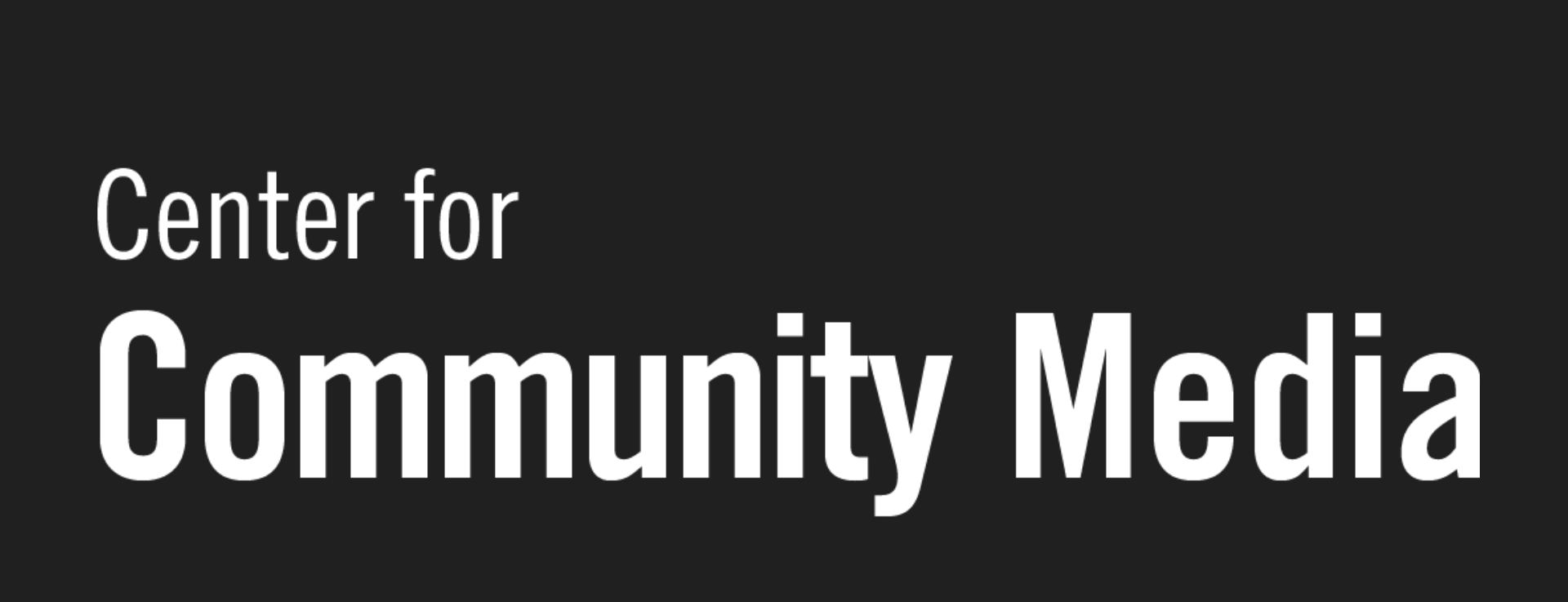Creating a Directory
It is probably worthwhile for the independent third party to create a directory of local news outlets. It will often have a better sense of what’s happening on the ground than the city or state government—and having an independent version will make it harder for political favoritism to creep in the process.
In Chicago, the Chicago Independent Media Alliance created a directory of local news outlets.
In New York City, the Center for Community Media has maintained a network of news outlets, with many participating in CCM’s town halls and workshops. In 2020, CCM’s Advertising Boost Initiative conducted a survey (including contact information, type of news organization (print, digital, radio, for-profit, nonprofit, hyperlocal, citywide, etc.), newsroom size, number of staff, audience, revenue, source of revenue (state, city or private, their challenges and needs). They also reviewed news organizations’ websites to check the frequency of updates, website credibility, and type of content. And they contacted all news organizations leaders to verify information and check their appropriateness before including them in the list. It is vital to verify the credibility and relevance of news organizations regularly. Annual updates are essential to the accuracy and usefulness of the directory
Government agencies will probably create their own directory with their own criteria because procurement rules usually require contract recipients to be officially registered. In New York City, the government excluded specific news organizations because their websites could not be optimized to receive city ads, the print circulations could not be verified, or they did not update content regularly.
A university is in a good position to create this directory, but other journalism or good government nonprofits may also.
A directory should include information on the following:
- Publication’s name
- Location
- Its coverage area (or coverage focus if it’s not a geographic area)
- The language in which it is published
- Frequency of content updates
- Audience [let’s specify the proper metrics used and how they’re verified]
- Whether they serve appropriate advertising sizes
An even more thorough list would include:
- The number of employees a given publication has (if you think you might pursue an employee cap as a means of focusing the benefits on small publications)
- Whether they have a NewsGuard rating or certification from the Journalism Trust Initiative by Reporters Without Borders.
Connecting Ad Buyers and Publishers
City and state departments often use advertising agencies to facilitate placing ads in local media. In New York City, a handful of advertising agencies that work with city departments contact publishers on a list provided by the city. In the past, most small local publishers were overlooked, never received government ad placements, or received a paltry $250 and $1,000 in ad campaigns. To ensure that more publishers connected with advertising agencies, ABI created a map of news organizations to make them visible to ad agencies; engaged with ad agencies to build strong partnerships and advocate for publishers; created the Advertising Boost Guidelines for publishers; and organized town hall meetings between publishers and ad agencies. Today, more publishers connect directly with advertising agencies.
Preparing publishers for success
In many cases, local publishers will not be ready to use government advertising. In New York City, the Mayor’s Office of Ethnic and Community Media established eligibility requirements for inclusion in the city’s list. Many publishers are not yet ready to receive ads: some lack media kits, do not know how to set ad prices, or may not be able to receive digital advertising. CCM has offered hands-on training and webinars on media kits, raised awareness about how advertisements would be placed, and created mentorship opportunities.
To take advantage of a government advertising policy, publishers should have the following:
- A functioning website with regular content updates
- Verifiable metrics about audience reach or audience engagement.
- Clear and accurate descriptions of the publication’s audience segment/demographic
- A proper media kit
- A process for regularly updating content
- Knowledge of advertising industry standard practices across relevant mediums (print, digital, and radio)
- Analytic data on web placements
- Fair and appropriate pricing
In some cases, the third party will need to assist outlets to be prepared:
- Provide training on how to create a media kit.
- Provide thorough information on how advertisements are placed, including points of contact and key deadlines.
- Communicate the government’s expectations for the participating publishers, including what metrics will be needed (more on that below)
- Coach publishers on how to make the advertisements successful in the eyes of the ad buyer.
Technology upgrades
Some of the hurdles facing publishers’ ability to take advantage of the bill will go beyond education and relate to their ability to place, price, and track print and digital advertising. Publishers must know the technology expectations to participate in the program and find ways to outfit their organizations. At a minimum, publishers will need:
- An SEO-friendly website
- Ability to receive and publish ads of different sizes.
- Ability to avoid a single advertisement over-saturating the inventory.
- Ability to target advertisements geographically.
Metrics (proving effectiveness)
Local news publishers will need to act, as much as possible, like every other recipient of advertising. They’ll need to be able to report their circulation and digital traffic. They would need to be able to report the effectiveness of campaigns, including circulation of a particular issue if the ad buy was in print or the impressions and unique visitors if the advertisement was on a website. In New York City, the minimum tech requirements were:
- Have a website compatible with digital ad specifications (such as sizing and resolution) and can serve advertisements in an automated manner
- Understand key metrics for ad performance (Impressions, independent users, click-through rates, etc.)
- Understand how to implement geographic targeting (many government advertising campaigns have geographic-specific objectives)
Follow up and review
It is essential to measure the program’s effectiveness from the perspective of the publisher and the taxpayer. When a government advertising program is launched via a permanent law or local ordinance, this monitoring and evaluation maintains the program. If the program were established via an executive order or a temporary budget bill, the assessment would demonstrate its efficacy and help lawmakers refine it. These reports should include:
- How much went to qualifying local publishers (in total dollar terms, percentage terms, and broken down by government department)?
- How many qualifying local news outlets received the government advertising funds, and how many did not?
- What did some (does not have to be all) publishers do with the increased ad revenue? Were more reporters hired?
- What evidence was there that the ads effectively met the government’s goals?
Some examples:
NEXT: Resources – Other Bills





